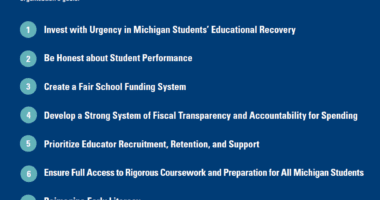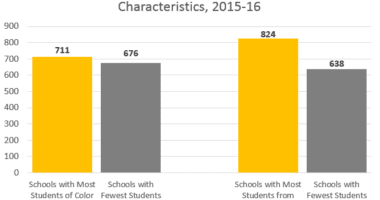Charter Schools: More Battles Everywhere You Look
By Rick Cohen, The Nonprofit Quarterly
The turbulent world of charter schools, covered here because many or most are managed by nonprofits, continues just about daily, with observers writing pro or con and with legislatures and governors expanding or limiting the number of charter schools. Increasingly, however, critics of charter schools are feeling empowered to publish tough critiques backed up by evidence and research.
- In Nebraska, the head of the Nebraska State Education Association, Craig R. Christiansen, writes about the “false promise” of charter schools: “The scholarly research shows clear disadvantages for the minority community with charter schools, including a much higher attrition rate for minority students and, ironically, relatively increased segregation rates for both the charter schools and the regular community schools,” Christiansen says. “In terms of student achievement, the current research on charter school student performance reveals that charter schools tend to score below regular community schools.” He argues that the innovations and flexibility that charter schools purport to implement can be done in regular public schools. The issue of charter schools, he suggests, is more about political ideology than education.
- Ted Vaden, the former editor and publisher of the Chapel Hill News, also offers a negative view of charters. He cites the research of Ted Fiske, the former education editor of the New York Times, to suggest that in North Carolina, where there are 148 charter schools (up from 100 or so in 2011), charters increasingly do not serve minority children and children with special needs: “In the early years [of charter schools in North Carolina], the percentage of black children in charter schools exceeded their representation in traditional public schools, as African-American parents sought more targeted learning environments for their children. But since then, the trend has reversed. By 2012, the percentage of black children in charters was the same as in traditional schools (about 26 percent). But enrollment of white children in charters surged to 62 percent, compared to 53 percent in traditional schools. Why? One reason is that as charters have grown, they haven’t met the needs of low-income and special needs populations. By law they are expected to serve minority populations, but they are not required, like traditional schools, to offer transportation and subsidized meals. In practicality, that’s a deterrent to non-white families.” He views charter schools, promoted by the conservative John Locke Foundation, as playing a role in an ideological scheme “to privatize education by robbing resources from the traditional schools.”
- However, the North Carolina legislature is considering increasing, not decreasing the number of charters in the state, a trend that is reflected in some other states. In Maryland, the new Republican governor, Larry Hogan, wants to take things a step further. He is supporting legislation that would loosen what charter school operators consider to be overly rigid restrictions on their operations to give them more flexibility in hiring and firing teachers and in determining admissions standards, plus give charter schools access to more public funding. In Pennsylvania, the Republican speaker of the state House of Representatives, Mike Turzai, showed up in Philadelphia to demand more charter school approvals and was apparently bitterly disappointed that the school district approved only five new applicants. The Alabama state legislature will be considering a bill to authorize the creation of charter schools in time for the 2016-2017 school year. Republican politicians are tending to view charter schools—and “school choice” in general—as a required component of the Republican catechism, even if the evidence of charter school superiority over traditional public schools is questionable.
- Elsewhere, some poorly performing charter schools (and some widely criticized charter school authorizers) are facing challenges. Three charter schools in Tucson are in danger of being shut down if they don’t adhere to announced improvement plans. In South Carolina, charter school operator Benita Dinkins-Robinson is on trial for embezzling as much as $1 million in federal Department of Education and Department of Agriculture funds that were supposed to have gone to students at her Mary L. Dinkins Higher Learning Academy. Four of the 39 charter schools in Memphis are being shut down this year because of their poor performance, all four in the bottom five percent of all schools in Tennessee. In Detroit, the editorial board of the Free Press has called for reining in the “reckless” authorizers of charter schools that have been authorizing new charter schools at a “frantic” pace. Citing a report from the Education Trust that slammed the performance of many charter school operators, the Free Press editorial board took particular note of the number of charter schools sponsored by colleges and universities, Eastern Michigan University (12 schools) and Northern Michigan University (10 schools), that were below par.
Christiansen says the charter school proponents are motivated by ideology, which might mean that they are using charter schools as stalking horses to weaken public schools (even though charter schools themselves are public schools), to undermine the teachers unions, and to move toward an expanded privatization of K-12 education in the U.S. It seems to some like Vaden that there is little in terms of pedagogical technique that the charter schools are trying to do that couldn’t be done—and, in many ways and in many places, is already being done—in traditional public schools, that is, other than replacing teachers with newcomers with lower qualifications, smaller salaries, and typically little or no union connections.
Sometimes, the lurch toward charter schools is a little like magical thinking; freeing charter schools from the restrictions attendant to public schools (like transportation, subsidized lunches, taking ESL students, and serving special needs children) will somehow magically vault those schools to levels of student performance regardless of the social and economic conditions of poor children. The nonprofit sector, too, has its proponents of magic, that the shift from public to private (or nonprofit to quasi-for-profit) will radically change the equation of performance and outcomes. As the continuing controversy around charter school management and performance shows, experts in prestidigitation are not necessarily quite as skilled in K-12 education.—Rick Cohen





